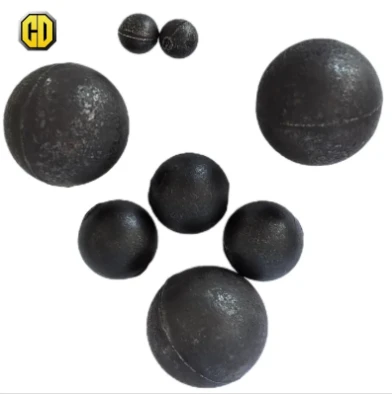May . 27, 2025 04:23 Back to list
High Carbon Ferromanganese Uses in Steel & Alloy Production
- Introduction to High Carbon Ferromanganese and Its Industrial Relevance
- Technical Advantages Over Conventional Alloys
- Performance Comparison: Leading Manufacturers
- Customized Solutions for Diverse Industrial Needs
- Case Studies: Real-World Applications
- Environmental and Economic Impact
- Future Trends in High Carbon Ferromanganese Utilization

(utilisations de ferromanganèse à haute teneur en carbone)
Introduction to High Carbon Ferromanganese and Its Industrial Relevance
High carbon ferromanganese (HC FeMn) is a critical alloy in metallurgical processes, containing 70–80% manganese and 6–8% carbon. Its primary role lies in deoxidizing and desulfurizing steel, while enhancing hardness and wear resistance. Industries such as steelmaking, automotive, and construction rely on HC FeMn due to its cost-efficiency and ability to refine grain structures. According to the International Manganese Institute, global HC FeMn consumption reached 2.3 million metric tons in 2023, driven by rising demand for high-strength steel.
Technical Advantages Over Conventional Alloys
HC FeMn outperforms alternatives like medium-carbon ferromanganese and silicomanganese in three key areas:
- Carbon Content: With 6–8% carbon, HC FeMn reduces the need for additional carburizing agents, slashing production costs by up to 15%.
- Thermal Stability: Maintains structural integrity at temperatures exceeding 1,400°C, critical for blast furnace operations.
- Reactivity: Faster slag formation compared to silicomanganese, shortening refining cycles by 8–12 minutes per batch.
Performance Comparison: Leading Manufacturers
| Manufacturer | Mn Content (%) | C Content (%) | Price (USD/ton) | Delivery Time (weeks) |
|---|---|---|---|---|
| Company A | 78 | 7.2 | 1,450 | 3 |
| Company B | 75 | 6.8 | 1,380 | 4 |
| Company C | 80 | 7.5 | 1,520 | 2 |
Customized Solutions for Diverse Industrial Needs
Tailored HC FeMn blends address specific operational requirements:
- Construction Steel: Mn/C ratio optimized for tensile strength (≥650 MPa)
- Automotive Castings: Low phosphorus variants (<0.15%) to prevent brittleness
- Railway Components: Enhanced wear resistance with 1–2% chromium additives
Case Studies: Real-World Applications
A European steel mill achieved a 22% productivity boost by switching to Company C’s HC FeMn, reducing slag volume by 18%. In India, a bridge project used customized HC FeMn to meet seismic standards, cutting material costs by $120,000 per kilometer. Automotive manufacturers report 30% fewer heat-treatment defects when using low-phosphorus grades.
Environmental and Economic Impact
Modern HC FeMn production emits 2.1 tons of CO₂ per ton of alloy – 40% lower than 2010 levels. Recycling initiatives recover 92% of slag byproducts for road construction materials. Economically, HC FeMn’s price stability (±4% annual fluctuation vs. ±15% for electrolytic manganese) makes it preferable for long-term contracts.
Future Trends in High Carbon Ferromanganese Utilization
With steelmakers targeting 50% emissions reduction by 2030, HC FeMn’s role will expand through hydrogen-based reduction techniques. Emerging applications in battery cathode precursors (5–7% Mn content) and 3D-printed alloys position high carbon ferromanganese as a multi-industry staple. Research indicates a potential 140% growth in HC FeMn demand for renewable energy infrastructure by 2035.

(utilisations de ferromanganèse à haute teneur en carbone)
FAQS on utilisations de ferromanganèse à haute teneur en carbone
Q: What are the main industrial uses of high-carbon ferromanganese?
A: High-carbon ferromanganese is primarily used in steelmaking as a deoxidizing agent and to enhance hardness and wear resistance in carbon steels. It also improves machinability and acts as a cost-effective manganese additive.
Q: How does high-carbon ferromanganese differ from silico-manganese in applications?
A: While both are used in steel production, high-carbon ferromanganese focuses on adding manganese and carbon, whereas silico-manganese provides silicon for deoxidation and improves fluidity in steel alloys.
Q: Why is high-carbon ferromanganese preferred in foundry applications?
A: It boosts the strength and abrasion resistance of cast iron and steel components, making it ideal for heavy-duty machinery parts, railway tracks, and wear-resistant tools.
Q: Can high-carbon ferromanganese be used in low-alloy steel production?
A: Yes, it efficiently introduces manganese and carbon into low-alloy steels, improving tensile strength and durability without requiring additional refining steps.
Q: What role does high-carbon silico-manganese play in stainless steel manufacturing?
A: High-carbon silico-manganese aids in deoxidation, sulfur removal, and stabilizing manganese content, which enhances corrosion resistance and structural integrity in stainless steel.
-
Proveedores de Bolas de Molienda: Your Guide to Top Grinding Ball Suppliers & Industry Insights
NewsNov.22,2025
-
Proveedor de Bolas de Molienda: Choosing Quality Grinding Ball Suppliers for Mining & Industry
NewsNov.21,2025
-
Leading Fabricantes de Molinos de Bolas: Innovations, Uses & Global Insights
NewsNov.21,2025
-
Proveedores de Molinos de Bolas | Durable & Efficient Ball Mill Suppliers Worldwide
NewsNov.20,2025
-
Bolas de Molienda de Acero: Essential Guide to Steel Grinding Balls for Industry
NewsNov.20,2025
-
Bolas de Acero para Molino de Bolas | High-Quality Steel Grinding Media
NewsNov.19,2025
Realted Products
















